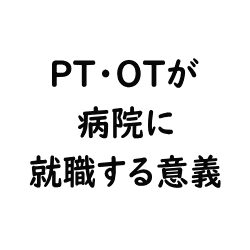目次
大腿骨近位部骨折例に対する必須アミノ酸摂取が身体機能に与える影響
リハビリテーション栄養という概念が一般的になってから10年以上が経過しますが,理学療法士・作業療法士もクライアントの栄養面を考慮して運動療法を実施する必要があります.
本邦でもサプリメントをはじめとする補助食品の摂取による介入試験に関する報告が増えてきております.
今回は大腿骨近位部骨折例に対する必須アミノ酸摂取が身体機能に与える影響を検討した無作為化比較試験をご紹介させていただきます.
紹介する論文
Aging Clin Exp Res. 2018 Dec 11. doi: 10.1007/s40520-018-1090-y. [Epub ahead of print]
Effects of essential amino acid supplementation and rehabilitation on functioning in hip fracture patients: a pilot randomized controlled trial.
Invernizzi M, de Sire A, D’Andrea F, Carrera D, Renò F, Migliaccio S, Iolascon G, Cisari C
今回ご紹介いたします論文は2018年に掲載された比較的新しい論文です.
研究の背景と研究目的
Physical exercise and nutrition seem to have a key role in the management of hip fracture patients.
To evaluate the impact of a 2-month rehabilitative protocol combined with dietetic counseling, with or without essential amino acid supplementation, on functioning in hip fracture patients.
身体運動と栄養療法は大腿骨近位部骨折例のリハビリテーションにおいて非常に重要な役割を果たします.
この研究では必須アミノ酸摂取の有無が栄養学に基づくカウンセリングを含むリハビリテーションプログラムの効果を検討することを目的としております.
研究方法
In this pilot randomized controlled study, we recruited patients aged more than 65 years, at 3 months after hip fracture. We randomly assigned the participants into two groups (A and B). Both groups performed a physical exercise rehabilitative programme (five sessions of 40 min/week for 2 weeks, followed by a home-based exercise protocol) and received a dietetic counseling; only group A was supplemented with two sachets of 4 g/day of essential amino acids (Aminotrofic®). We evaluated at baseline and after 2 months of intervention (T1): hand grip strength, Timed Up and Go, and Iowa Level of Assistance scale (ILOA).
このパイロット無作為化比較試験では,65歳以上の術後3カ月が経過した大腿骨近位部骨折例を対象としております.
対象者を無作為に2群に分類しております.
両群ともに2週間にわたって週40分のホームプログラムによる身体活動を主体とするリハビリテーションプログラムを実施し,栄養学的なカウンセリングを受けております.
A群のみ1日当たり4gの必須アミノ酸摂取しております.
ベースラインおよび介入2ヶ月後に,握力,TUG,IIOAを評価しております.
研究結果
The 32 hip fracture patients (mean aged 79.03 ± 7.80 years) were allocated into two groups: group A (n = 16) and group B (n = 16). All the participants showed significant differences in all outcomes at T1 (p < 0.017). Sarcopenic patients in group A (n = 10) showed statistically significant differences in all the primary outcomes at T1 (p < 0.017), whereas sarcopenic patients in group B (n = 13) showed a significant reduction of ILOA only. In non-sarcopenic patients, we found no differences at T1 in all outcome measures.
32例が対象となり,16例をA群,16例をB群に割り付けております.
介入後2カ月の段階における全てのアウトカムで有意差を認めており,特にサルコペニアを有する患者(B群の13零)でIIOAのみ有意な現象を認めております.
サルコペニアを有さない患者においては全てのアウトカムにおいてA群・B群の間で有意差を認めておりません.
結論
A multidisciplinary rehabilitative and nutritional intervention seems to be effective on functioning in hip fracture patients, in particular sarcopenic ones.
学際的なリハビリテーションおよび栄養介入は特にサルコペニアを合併した大腿骨近位部骨折例に対して有益であると考えられます.
今回は大腿骨近位部骨折例に対する必須アミノ酸摂取が身体機能に与える影響を検討した無作為化比較試験をご紹介させていただきました.
改めて栄養療法の重要性を認識させられる結果ですが,すべての大腿骨近位部骨折例に栄養療法が必要というよりはサルコペニア患者を抽出して介入する方策が有益であると考えられます.







コメント